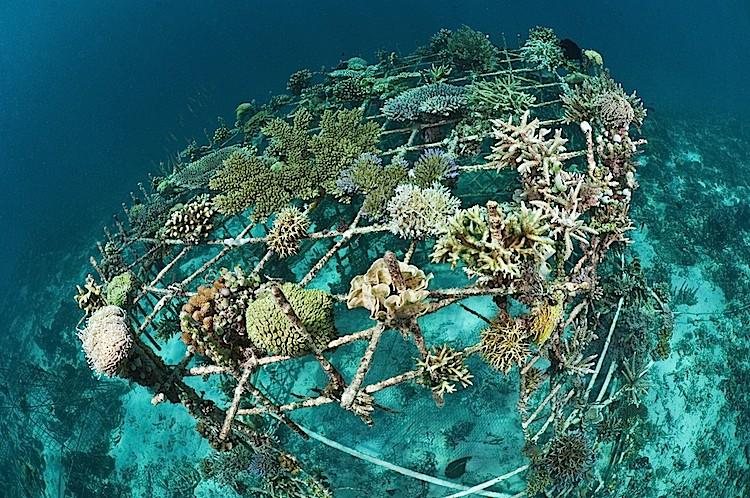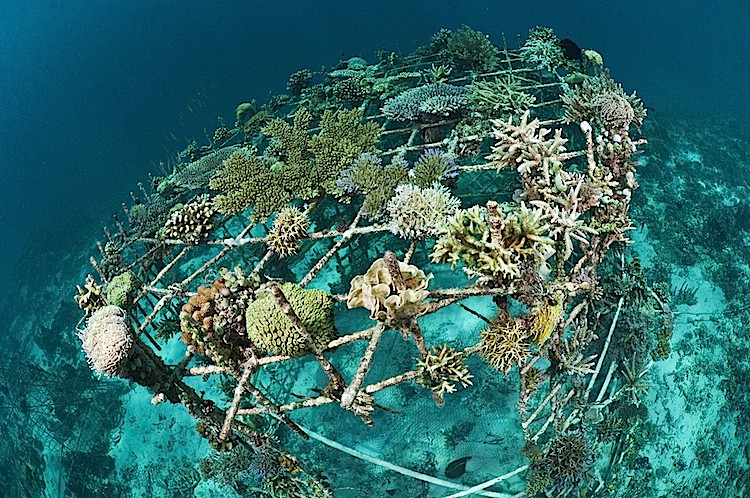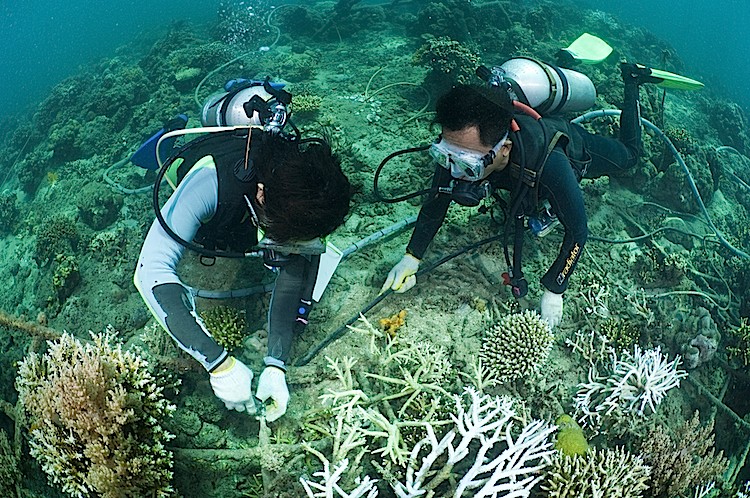The Biorock process was developed by Thomas Goreau and Wolf Hilbertz in the 1970’s. Electricity is used to promote the deposition of calcium carbonate, and to a lesser extent magnesium hydroxide, which build up on the surface of the cathode.
Hard corals quickly bond to this material and the process is thought to accelerate coral growth by up to four times. The resulting “reef” of hard coral soon attracts other inhabitants.
Biorock structures—metal frames connected to an electrical supply on the surface—have been used in the Maldives, Bali, Papua New Guinea, the Seychelles, Japan, and the Caribbean. The process has been touted as a way to rehabilitate damaged reefs in all tropical areas.
However, there is some debate as to the effectiveness of Biorock structures, and it has been suggested that simple wire meshes are just as useful. By stabilizing the rubble substrate of a damaged reef, these meshes have been shown to be more effective at rehabilitating damaged reefs at much less cost.
At Pemuteran in Bali, the Kerang Lestari Reef Restoration Project has installed many Biorock structures throughout the bay, and tourists can sponsor a coral colony that is placed on a frame, alongside their name spelled out in wire. The sponsors are sent a yearly photo of their colony so they can watch the coral grow.
Reef Balls were first developed in the United States as a way to help the restoration of damaged coral reefs. They are normally made from a pH-balanced concrete material and have a rough surface to promote settling by corals, algae, and sponges.
Reef Balls are typically laid on a damaged reef in large groups to create artificial reefs. There has also been some debate about the effectiveness of reef balls.
Matthew Oldfield is a freelance photographer based in Bali, Indonesia, specializing in editorial and documentary images from both above and below the waves. He works primarily with charities, NGOs, and other organizations working to conserve the environment, endangered species, and disappearing cultures.










